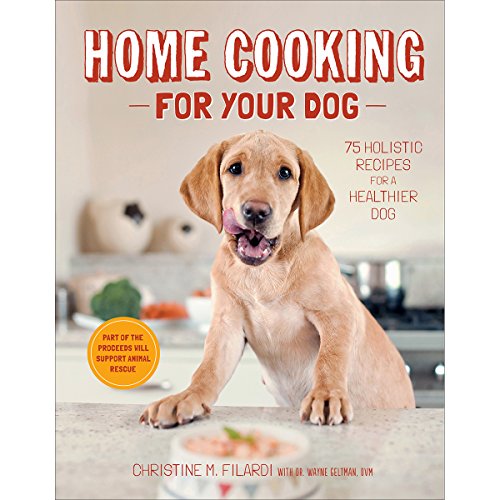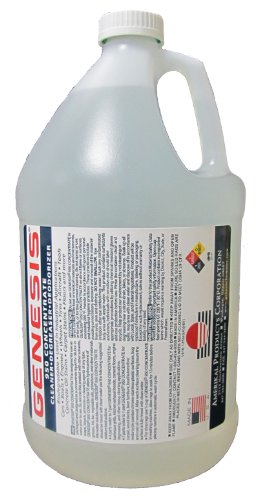
 Credit: Tony Booth and StockFreeImages.com. No copying. All rights reserved.
Credit: Tony Booth and StockFreeImages.com. No copying. All rights reserved.
The seemingly innocent herb, Rosemary, has hit the Internet canine forums with ferocity the world over. There has rarely been such a passionately debated subject among nutritionists, veterinarians, scientists and health organizations. Whether Rosemary is as harmful as some are suggesting – or as innocuous as others are saying – is causing confusion and frustration for dog owners, who just want to know they are feeding their best friends a safe daily diet.
I have researched and investigated the subject fully in trying to put the record straight and this is what I have discovered …
Why Is Rosemary Being Debated At All?
Many people suggest that dogs have probably been fed small amounts of the herb for many decades, if not for hundreds of years, without apparently suffering any adverse effects. This could be true – but in reality, no one can categorically say it is, because this common cooking ingredient has not been brought into question until now. Dogs might have eaten rosemary as table scraps before the mass production of manufactured dog food became available. In such small quantities, any short-term bad effects would probably have gone unnoticed or perhaps blamed on other things.
However, recently introduced changes in dog food manufacturing and the global general interest in dog food safety have created a very specific problem, which has caused canine nutritionists and health scientists to ask questions about using the herb in this way. Packaged and processed dog food has always been produced using a variety of preservatives. Many of the chemicals and artificial compounds once used to preserve dog food were recently declared unsafe. Some are now outlawed completely from the manufacturing process, while others are now used following strict guidance and in limited quantities.
This has caused some manufacturers to look at alternative ways of preserving the products being made, thus giving dog owners the shelf-life they need for the tinned or dry foods routinely purchased. Rosemary has long been regarded as an excellent antioxidant, which to you and me means it is an effective preservative. The manufacturers of dog food have recently recognized this too, and many are now substituting some of the chemicals they once used with the herb as an added ‘natural ingredient’, often promoted and advertised to enhance the flavor – when in fact, they are really deploying its antioxidant qualities.
As a direct result, some dogs are now being fed rosemary every day for every meal and its concentration in the canine body is now raising serious health concerns, because symptoms being reported could link eating rosemary with a predictable illness. While there is still no evidence I could find of any credible scientific study about how this herb is affecting dogs, there are many canine nutritionists and scientists raising questions about the safety of rosemary oils and extracts as an ingredient in routinely fed processed dog food.
History of the Herb
Rosemary is one of the oldest recorded plants used by man. In ancient Egypt coffins and tombstones had sprigs of rosemary placed on them as a mark of remembrance. The custom continued until the middle ages and spread across various cultures and even today sprigs are traditionally worn to commemorate Anzac Day in Australia, where families remember their ancestors. From the middle ages onwards, the herb was often placed under pillows to dispel nightmares and evil spirits and other forms of negative energy – and in homes during the spread of the black plague people would burn it to keep disease out. It is perhaps due to this custom that rosemary is still a common ingredient in church incense.
The ancient Greeks and Romans used the herb both for cooking and as medicine from about 500 BC. Despite its extraordinarily long association with humans, it wasn’t until 1987 that scientists discovered rosemary had preservation properties (Rutgers University, New Jersey). Quite apart from enhancing the taste of foods such as lamb and fish, it is also now creatively used to scent perfumes and cosmetics, and is also employed as a natural insect repellent, as well as having an established role as an ingredient in various homeopathic remedies.
Medicinal Use
Rosemary has a variety of medicinal and herbal remedy uses. It is commonly used as a treatment for digestive disorders, including heartburn and digestive gas, as well as for various liver and gallbladder problems. Historically, women have employed rosemary to control menstrual flow and, in recorded cases, to induce abortion. The herb is a primary ingredient of lotions and ointments used in the management and treatment of circulatory problems, toothache, eczema and sciatica.
Rosemary is a rich source of calcium, iron, vitamin B6 and carnosic acid, which is able to fight off free radical damage in the brain (this is now being studied as a potential treatment of Alzheimer’s Disease). The international journal Oncology Reports found that "crude ethanolic rosemary extract (RO) has differential anti-proliferative effects on human leukemia and breast carcinoma cells." In addition, the journal Ophthalmology & Visual Science, led by Stuart A. Lipton, M.D., Ph.D. and colleagues at Sanford-Burnham Medical Research Institute, revealed that carnosic acid obtained from rosemary can promote improved eye health.
These are of course all proven human interactions with the herb. Health and food agencies considered it safe in small doses, but in larger doses or more concentrated extracts it can produce spasms (seizures), vomiting, coma and pulmonary edema – and miscarriage in pregnant women, as mentioned before . Studies performed by the University of Maryland Medical Center, concluded that rosemary adversely affects and interacts with other drugs including anticoagulants, ACE inhibitors, diuretics and lithium (the latter is commonly used to treat manic-depression and other mood-swing disorders). People need to take professional advice if they are taking lithium as a medication for bi-polar disorders, because rosemary can cause lithium levels to rise to toxic levels in the body and it is probably best avoided.
The conclusion I wish to promote from the above information is that rosemary may seem like a harmless and often used culinary ingredient, but it is a little like a wolf in sheep’s clothing, because it can produce beneficial as well as severely adverse effects if consumed in sufficient quantities. Most human beings only ever use this herb as a sprinkling on meat or fish or as part of an occasional recipe, which means we are able to enjoy it for its enhancing flavour and not suffer any harmful or toxaemic effects. But dogs are now being force-fed rosemary at every meal because manufacturers are using it to prolong the shelf-life of dog food. While some dogs are able to cope with the minor neurological and circulatory changes it might inflict, others with relevant predisposed conditions, those with impaired immune systems or those taking certain groups of medicines, may suffer severe repercussions and undesirable reactions.
The Interaction of Rosemary with Dogs – The Evidence
WhichDogFood.co.uk says: ‘Rosemary is widely regarded by herbalists as a natural stimulant. Although this is fine for most dogs, it is often suggested that it should not be given to epileptic dogs as it may increase the incidence or severity of seizures.’ The website also explains that some nutritionists say rosemary affects uterine function and menstrual flow, making it dangerous when a dog is pregnant. In conclusion Which Dog Food says: ‘I generally recommend avoiding rosemary if your dog is pregnant or prone to seizures.’ The editor of Which Dog Food is a canine nutritionist with 10 years’ experience.
The much respected DogFoodAdvisor website says: ‘… we’ve never been able to find any scientific studies linking rosemary extract with seizures in dogs. We’ve only found mention of its potential relationship in humans. And then, only rarely in subjects prone to epileptic seizures in the first place.’
SFGate.com says: ‘Rosemary is not listed on the American Society for Prevention of Cruelty to Animal's lists of toxic plants for dogs or cats, and is not considered toxic to pets. However, it does contain volatile oils that can cause stomach upset or depression of the nervous system if consumed in large amounts. Rosemary oil is sometimes used in aromatherapy or as a topical ointment. It should never be taken internally by animals or people.’
It is perhaps worth pointing out that pet food labels sometimes quote Rosemary Oil (presumably the very same substance warned against above) is an ingredient contained in their products.
Anna-Marija Helt, Ph.D. of The Dog Blog, says: ‘… purified rosemary essential oil, a very strong derivative of rosemary, is not appropriate for use in any person or animal prone to seizures, especially in high doses.’
The European Food Safety Authority (EFSA) has stated (2012) that it is ‘not in a position to deliver an opinion on the safety and efficacy of the additive rosemary extract liquid of natural origin as a technological additive for dogs and cats.’ As far as I can tell, there have been no subsequent comments from the EFSA that changes their position. They cannot confirm rosemary is safe as an additive to dog food, because the ingredient has never been properly and scientifically tested.
The US Food and Drug Administration (FDA) became concerned about the use of rosemary in pet foods in 2007, because it realized manufacturers were using extremely high concentrations of the extract. The FDA's Centre for Veterinary Medicine report of the same year says they ‘contacted the animal food industry regarding the use of rosemary extract in animal diets. Rosemary extract is generally recognized as safe (GRAS) for use as flavouring as published in Title 21 of the Code of Federal Regulations in Part 582.20. As flavouring, it rarely exceeds 50 milligrams in each kilogram of product. However, when the Centre became aware recently that rosemary extract is being used as an antioxidant at levels substantially above the flavouring use rate and that these levels of rosemary extract presented animal safety issues, we communicated this concern in letters to several trade associations.’
There have been no further published reports, comments or alerts by the FDA on this subject since and, as far as I can find, no follow-up has been undertaken to their concerns expressed about rosemary extract being used in dog food in 2007. This is despite a greater public awareness of rosemary being used as an antioxidant by many pet food manufacturers.
In Conclusion
Manufacturers of dog food have increasingly employed rosemary as an antioxidant in their products. While this is a great improvement on the artificial and potentially toxic chemical preservatives previously used, it also presents dogs with a potentially new and as yet untested risk. Rosemary has some valuable qualities – it may reduce the risk of cancer, help with neurological and circulation disorders and promote better digestion – but it may also increase the risk of epileptic seizures, cause miscarriage in pregnant dogs and interact adversely with a variety of veterinary prescribed medicines.
It seems there is no scientific study of the effects of rosemary on dogs, which to me seems extraordinary, particularly as it is now more widely being fed on a very regular basis to our best friends due to the processed foods we buy. The time has certainly now arrived for health and safety agencies to take charge of this frustrating and confusing situation, and hopefully start a proper and responsible investigation into the herb. Dog owners deserve reliable answers to their valid and unsettling concerns.
In the meantime, if you have a dog that has a neurological disorder, is prone to seizures, is pregnant or suffers from a circulatory, kidney or liver condition … I would be cautious about using any dog food with rosemary listed among its ingredients.
 Home Cooking for Your Dog: 75 Holistic Recipes for a Healthier Dog
Home Cooking for Your Dog: 75 Holistic Recipes for a Healthier Dog The Whole Pet Diet: Eight Weeks to Great Health for Dogs and Cats
The Whole Pet Diet: Eight Weeks to Great Health for Dogs and Cats Designer Dog Collars
Your dog can be stylish too!
Designer Dog Collars
Your dog can be stylish too!
 Puppy Potty Training Carpet Cleaning Tips
Potty Training A PuppyHow To
Puppy Potty Training Carpet Cleaning Tips
Potty Training A PuppyHow To
 Pettiquette: The Art of Responsible Dog Walking
Cmon Baby, Ill Show You How to Walk the Dog
Pettiquette: The Art of Responsible Dog Walking
Cmon Baby, Ill Show You How to Walk the Dog
 English Bridle Leather Dog Collars
If you have a medium to larg
English Bridle Leather Dog Collars
If you have a medium to larg
 Regurgitation and Vomiting Differences in Dogs and Cats
Regurgitation and Vomiting Differe
Regurgitation and Vomiting Differences in Dogs and Cats
Regurgitation and Vomiting Differe
Copyright © 2005-2016 Pet Information All Rights Reserved
Contact us: www162date@outlook.com